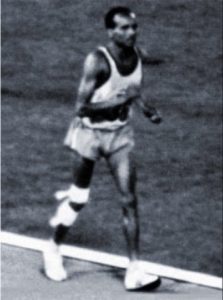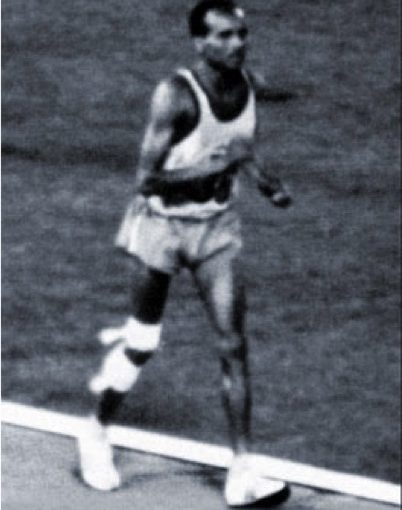Podcast (lead-with-a-story-podcast-series): Play in new window | Download | Embed
Subscribe: RSS
 MEXICO CITY IS A world away from the East African country of Tanzania, where John Stephen Akhwari lived. But that’s exactly where he found himself in October 1968, representing his country in the Summer Olympic Games as a marathon runner.
MEXICO CITY IS A world away from the East African country of Tanzania, where John Stephen Akhwari lived. But that’s exactly where he found himself in October 1968, representing his country in the Summer Olympic Games as a marathon runner.
The Race
Unfortunately, Akhwari suffered a fall during the race. And it wasn’t a gentle tumble on a grassy knoll. He fell hard on rough concrete, badly cutting his right leg and dislocating his knee. Medical personnel arrived quickly and bandaged his wounds. But the dislocated knee required more treatment than they were prepared for in the street. He needed to go to the hospital. But against their advice, Akhwari instead stood up and started off down the road behind the rest of the runners.
Given the severity of his injuries, he couldn’t run his normal pace. With a combination of jogging, hobbling, and walking, he pushed ahead. At 2: 20: 26 into the race, Mamo Walde of Ethiopia crossed the finish line in first place. Most of the remaining competitors finished within a few minutes. Akhwari was nowhere close.
An hour later, the Olympic stadium had only a few thousand people left in it. The marathon was the last event of the day, and the sun had already set. Mexico City was brutal on the marathon runners. At over 7,400 feet in altitude, the air has 23 percent less oxygen than at sea level. As a result, 17 of the 74 runners failed to finish the race that day. Akhwari, bloodied and injured, was determined to not be one of them.
Followed by a police escort, and clearly in great pain, Akhwari finally arrived and limped his way onto the track, his loosening bandages dangling from his leg. As the diminished crowd cheered in awe and disbelief, John Stephen Akhwari made his way around the track and crossed the finish line at 3: 25: 27, in last place. The few remaining reporters rushed onto the field to ask him why he continued running in his condition. He responded simply,
My country didn’t send me 5,000 miles to start this race. They sent me 5,000 miles to finish it.
Despite coming in last place, it was Akhwari’s picture that was in the paper the next day. And it was his story that was being talked about all over the world. His dedication became an inspiration to millions, and earned him the title “King without a crown.” To this day, his story is legendary among Olympic athletes and non-athletes alike.
The Lessson
“Yes, it’s an inspiring story,” you might protest. “But I’m not running a marathon. I’m running a business. How can that story help me?”
I’m not a marathon runner, either. But I use it all the time. Here’s one example. At many companies, managers are expected to rotate to new assignments every few years. It helps them develop skills needed for higher levels of responsibility, and brings fresh thinking to the business. Managers might find out what their next assignment will be two or three months in advance. Inevitably, when that happens, they begin to emotionally and mentally detach from their current responsibilities and start thinking about what’s next. The boss faces the challenge of keeping them focused on their current job until it’s time to leave.
Having faced that challenge many times as a boss, I often tell the story of John Stephen Akhwari to the junior manager eagerly awaiting the next assignment. The point, I explain afterward, is that once your next assignment is announced, others know you’re emotionally compromised. They know you’re running injured. But they also know the difference between a starter and a finisher. If you slack off these last three months, most people will forgive you out of sympathy. But if you want to make an impression that will last a long time, finish strong. People will notice.
The other benefit is that once told, that story also makes it easy to check up on your injured player and gently remind him to stay focused. Simply ask this question: “Hey, John, how’s your knee?”
[You can find this and over 100 other inspiring leadership stories in my book, Lead with a Story.]
—
 Paul Smith is one of the world’s leading experts on business storytelling. He’s a keynote speaker, storytelling coach, and bestselling author of the books Lead with a Story and Parenting with a Story.
Paul Smith is one of the world’s leading experts on business storytelling. He’s a keynote speaker, storytelling coach, and bestselling author of the books Lead with a Story and Parenting with a Story.

 Connect with him via email here.
Connect with him via email here.
Follow him on Facebook, LinkedIn, Twitter.
Sign up for his newsletter here to get one new story a week delivered to your inbox.

